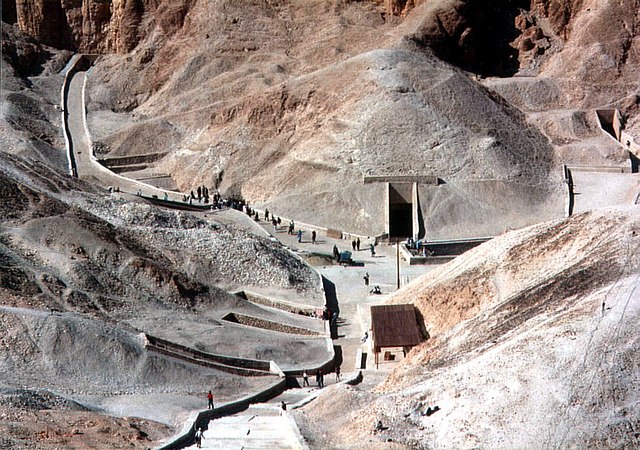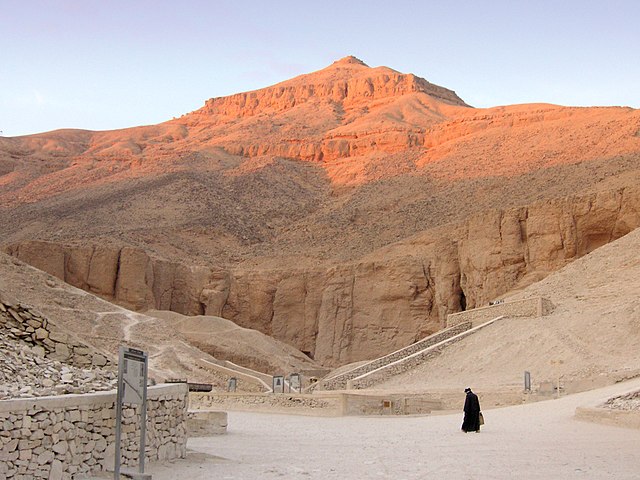Deir el-Medina, or Dayr al-Madīnah, is an ancient Egyptian workmen's village which was home to the artisans who worked on the tombs in the Valley of the Kings during the 18th to 20th Dynasties of the New Kingdom of Egypt The settlement's ancient name was Set maat, and the workmen who lived there were called "Servants in the Place of Truth". During the Christian era, the temple of Hathor was converted into a Monastery of Saint Isidorus the Martyr from which the Egyptian Arabic name Deir el-Medina is derived.
Ruins of Deir el-Medina
Ra slays Apep (tomb scene in Deir el-Medina)
Tomb at the entrance of Deir el-Medina
Fragment of relief of Khawy, Servant in the Place of Truth. 19th Dynasty. From Tomb 214 at Deir el-Medina, Egypt. The Petrie Museum of Egyptian Archaeology, London
The Valley of the Kings, also known as the Valley of the Gates of the Kings, is an area in Egypt where, for a period of nearly 500 years from the Eighteenth Dynasty to the Twentieth Dynasty, rock-cut tombs were excavated for pharaohs and powerful nobles under the New Kingdom of ancient Egypt.
View of the central East Valley, showing the area around KV62.
Panorama of the valley, looking north
The "Sepulchres of the Kings of Thebes", Richard Pococke, 1743
Al-Qurn dominates the valley.








